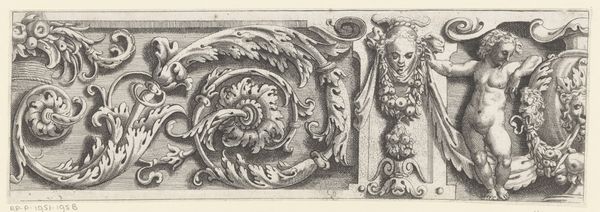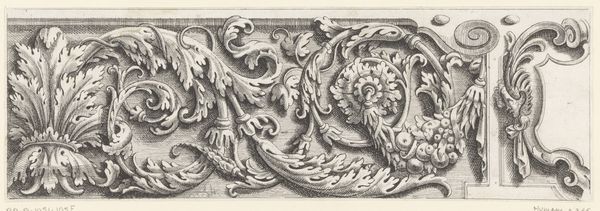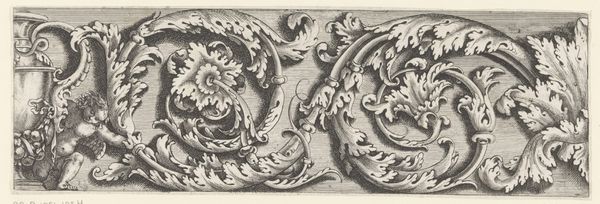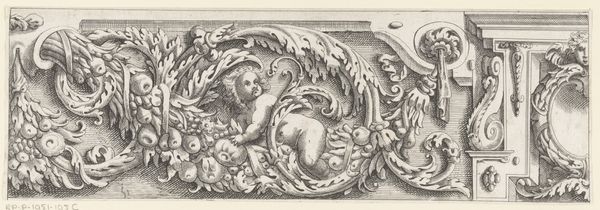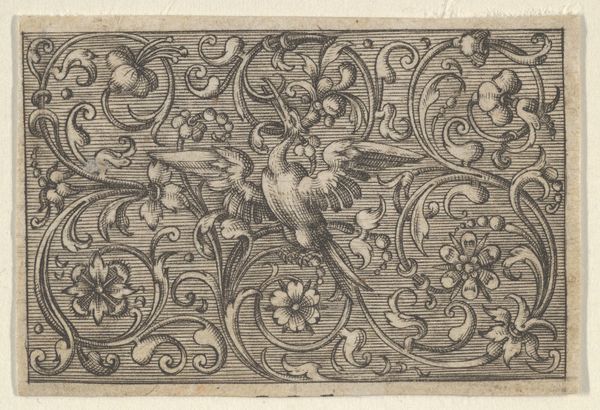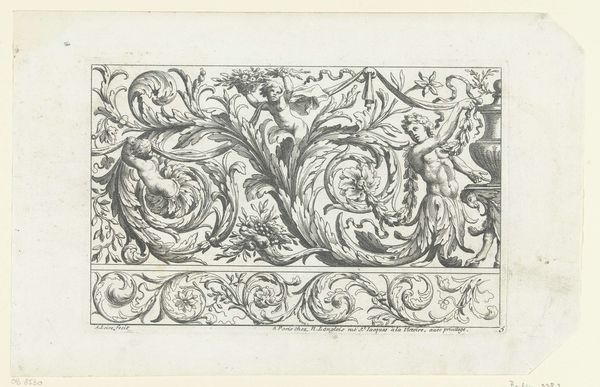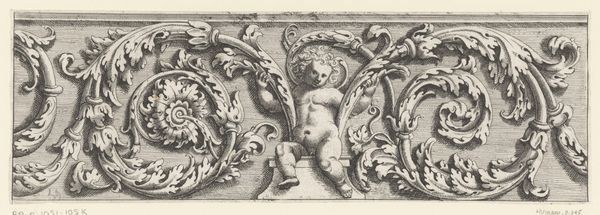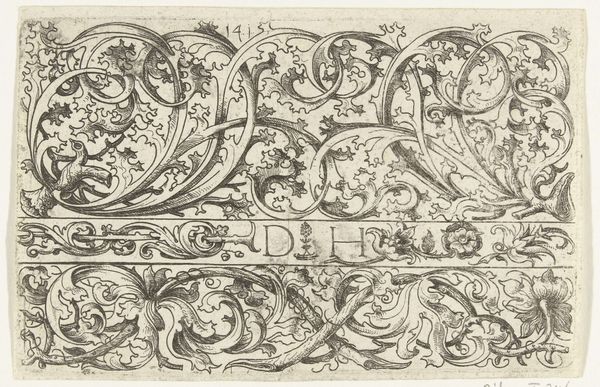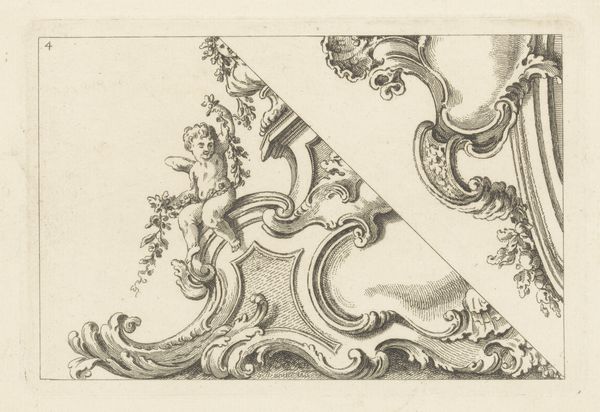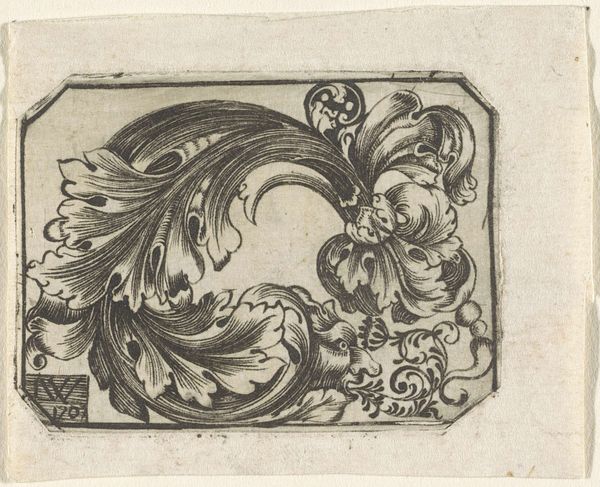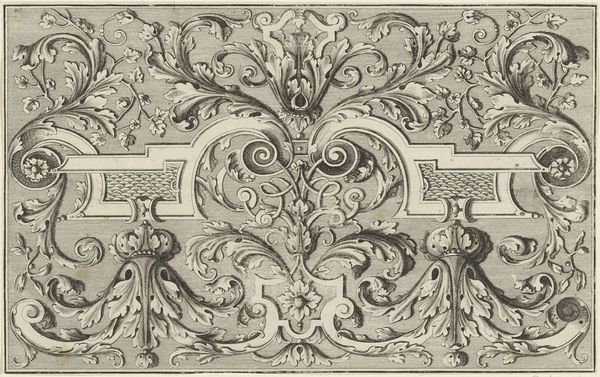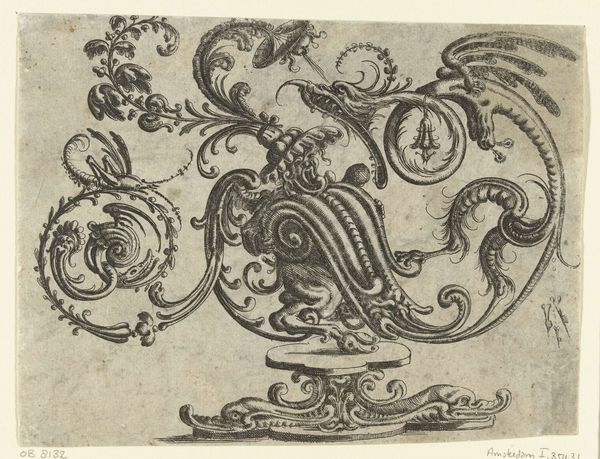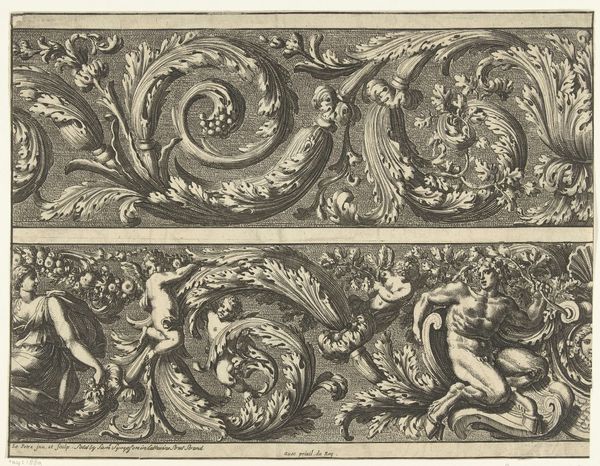
drawing, ink, engraving
#
drawing
#
baroque
#
pen drawing
#
ink line art
#
ink
#
geometric
#
line
#
decorative-art
#
engraving
Dimensions: height 93 mm, width 279 mm
Copyright: Rijks Museum: Open Domain
Curator: My eye is immediately drawn to the intricate detailing; the precision is remarkable! Editor: It's so ornate, almost dizzying. All that scrolling foliage makes my eyes dart around. This engraving from around 1640 is titled "Hoornen des overvloeds en vrouwenbuste," and you can find it here at the Rijksmuseum. Curator: Which translates to "Cornucopias and Female Bust." That title certainly sets the stage. What do you make of those horns of plenty? Editor: Well, cornucopias, as you know, are classic symbols of abundance and nourishment. But the way they're interwoven here, combined with that formal bust of a woman – possibly an allegorical figure – feels very deliberate. The artist, whose name, unfortunately, is lost to history, is making a clear statement. Curator: Yes, an abundance granted perhaps, or reflected by female virtue or authority? The way these visual elements are composed likely aimed to shape a particular idea of Dutch power and prosperity at a time of growing global trade. Engravings such as these were readily traded, influencing artisans across Europe and beyond. Editor: I'm fascinated by the stylized way the leaves and scrolls intertwine. It almost feels like peering into a dreamscape, full of swirling, evocative forms, each tendril seeming to vibrate with energy. Does the dynamism of the composition echo the turbulent times, do you think? Curator: Potentially, yes. There’s a certain restless energy that reflects not only the period's artistic sensibilities but also perhaps the broader societal currents, the Reformation’s emphasis on moralizing symbols or a shifting view of gender. What strikes me about this is how it collapses traditional symbolism into a decorative frieze, a style much needed for application across all social boundaries. Editor: Seeing it like that makes it all the richer. I’d been thinking of it in terms of personal aesthetic tastes; the swirling composition as an emblem of that baroque love of spectacle! Curator: And of status, absolutely. These flourishes become social language; and while individual craftsmanship mattered, context is just as central. This was never only decorative, nor only celebratory; it was also always saying something. Editor: Thank you. Thinking about its context makes the piece even more relevant to understanding not only artistic culture of the period but also its society more generally. Curator: Indeed, revealing just how much these symbolic representations were interwoven with socio-cultural codes of the era.
Comments
No comments
Be the first to comment and join the conversation on the ultimate creative platform.
